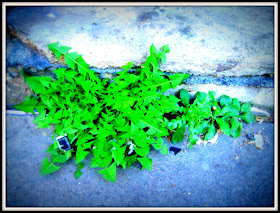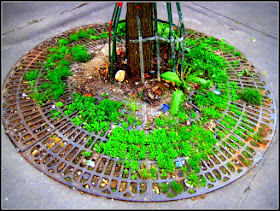French architect Guillaume Gillet would have been 100 this year, and to celebrate this anniversary an exhibition has been organised in Royan, home of his one true masterpiece, the Notre Dame church. A recent visit to the town gave me the opportunity to learn more about the designer of the Palais de Congrès in Paris (a construction I find both dreadful and fascinating), and discover how a key part of Paris almost looked very different today.
In the introduction to the exhibition, the word 'controversial' is used to describe the creations of Guillaume Gillet. Although he himself declared in 1965 that "nous vivons un âge d'or de l'architecture", public opinion today generally does not share this viewpoint. Nevertheless, his whole career was spent working in a post-war period known as 'les trentes glorieuses' in France, when large areas of the country needed to be quickly rebuilt and funds were abundant. It was an age when anything seemed possible, and architects were given vastly more freedom to imagine constructions than they have today.
Indeed, freedom seems to be something of a leitmotif throughout Gillet's career. After studying under Auguste Perret (see previous post), Gillet found himself a prisoner of war before his career had even begun. He spent nearly five years as a prisoner in Germany, but he was far from inactive. After befriending several other prisoners with a similar background to his own (and who he would later work with throughout his career), he designed and decorated a small chapel within the prison camp.
Perhaps eternally marked by this experience, Gillet spent most of his career designing both churches and prisons. It was one of his first constructions though that would prove to be his chef d'oeuvre, the Notre Dame de Royan church. Gillet himself became so associated with the building that he requested his ashes to be placed here after his death - a request that was finally accepted in 1996, 9 years after his death.
Built entirely in concrete, it is a spectacular construction, albeit one already in need of renovation. Although a material derided by many, the church truly shows the capacities of concrete to produce the monumental. V-shaped columns shoot skywards around the structure, supporting a roof which is only 8cm thick. Spiral staircases and sweeping balconies complete a building which impresses through it's somewhat austere simplicity.
As with many architects, the career of Guillaume Gillet was marked not so much by what he built but also by the projects that never made it off the drawing board. Two of the most significant of these were planned for riverside spots in Paris. The first was a proposition for a permanent Musée de l'Air et de l'Espace alongside the Seine at the very edge of the city. Based very much on his Pavillon de la France which was built for the 1958 Universal Exhibition in Brussels, it would have made an impressive addition to the Paris skyline in a position where finally nothing has ever been built.
 |
| Sketches for a proposed Musée de l'Air et de l'Espace, © Fonds Guillaume Gillet |
An initial rather banal plan for a headquarters building for the Air France company was not developed, but a design for a luxury hotel and conference centre did later win a competition (ahead of an even more radical project from Le Corbusier among others). However both changing tastes and a financial crisis put paid to the project before work could begin. The station was eventually given protected status, and a decision was made to preserve it and transform it into a museum.
 |
| A proposed HQ building for Air France dating from 1957 (top) and the much more daring (and accepted) proposition for an international hotel from 1961. © Fonds Guillaume Gillet |
Gillet's proposed building is not a bad one (and certainly more interesting than the hotel and conference centre he did later build at Porte Maillot), but it would have radically changed the left-bank skyline. However, the Eiffel tower had of course also done something similar a century earlier.
It will remain though an architecture of the invisible, a ghost structure that will now haunt me when I pass by the Musée d'Orsay. To remember Gillet though, it is far better to return to Notre Dame de Royan, as he himself was to do.
Guillaume Gillet, architecte des trentes glorieuses
Until 21st June 2012
Musée de Royan
31 avenue de Paris
Royan




























